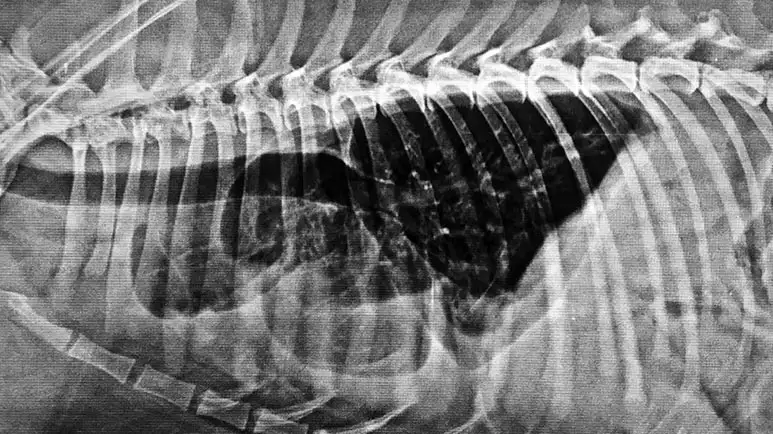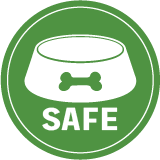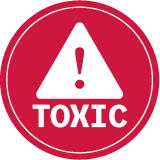Is Your Pet at Risk for This Rare Chest Condition?
This condition causes fluid to build up in your pet’s chest, usually caused by an unknown origin. While life-threatening, the prognosis is good once treatment is administered.

STORY AT-A-GLANCE
- Chylothorax is a condition where chyle (a milky liquid containing fat molecules) accumulates in an animal's thoracic cavity. It occurs four times more frequently in cats than dogs
- During normal digestion, fat molecules are absorbed by the cisterna chyli near the kidneys, then travel through the thoracic duct before emptying near the heart
- Common symptoms include breathing difficulties, lethargy, and loss of appetite and weight loss, though similar symptoms can occur with other diseases that cause fluid buildup, thus requiring veterinary diagnosis
- While many chylothorax cases have unknown causes, it can result from trauma, tumors, heart disorders, metabolic issues or parasitic infections affecting lymphatic vessels
- Treatment typically involves surgical intervention, with minimally invasive procedures now available. Success rates are high — over 90% for dogs and 60% for cats post-surgery
In animals, the thoracic cavity is a vital space located in the upper chest. Like us, this area houses the heart, lungs, and other essential organs, such as the windpipe for your beloved pet.1 As such, the thoracic cavity is crucial to supporting life, but under certain (and sometimes unknown) circumstances, it can develop an uncommon condition known as chylothorax.
What Is Chylothorax?
Chylothorax is a condition wherein chyle, a milky liquid of small fat molecules, accumulates in the thoracic cavity.2 While it’s uncommon for household pets, cats are four times more likely to get it than dogs. Southpaws, an Australian emergency hospital for animals, summarizes the role of chyle in pets below:3
“Chyle is a milky substance containing small fat molecules. During the process of digestion, fats from the meal are broken down and become small molecules known as chylomicrons. These molecules are absorbed by a structure known as the cisterna chyli (CC). It is located close to the kidneys, in the abdomen area.
The CC acts as a lymphatic reservoir, not only does it receive intestinal chyle, but also lymphatic fluid which comes from the pelvic limbs and the rest of the abdomen. Chyle travels through the thoracic duct (TD), which is an extension of the cisterna chyli into the chest. And then into the thoracic cavity. Eventually the contents of the TD are emptied into the CrVC (cranial vena cava), which is located near the heart.”
What happens when chyle builds up the pleura in the thoracic cavity? According to the American College of Veterinary Surgeons, the accumulation of chyle will cause difficulty in breathing. Moreover, it will cause many metabolic problems and weaken the pet’s immune system because it doesn’t pass through the proper pathways as it contains protein, white blood cells, and other nutrients. Finally, chyle irritates the pleura and pericardium, which leads to inflammation.4
So, how do you spot chylothorax before it happens? First, a breathing problem or coughing that does not expel phlegm. Your pet may also become lethargic and have no appetite. Weight loss can also occur if the condition has been happening for some time.5
Note, however, that any fluid buildup, such as pus and blood, will also lead to breathing problems, which do not necessarily point toward chylothorax. In any case, if you see your pet breathing differently, take them to your veterinarian for an immediate diagnosis to find out the real culprit.6
The Different Causes of Chylothorax
According to the University of California, Davis School of Veterinary Medicine (UC Davis), “anything that disrupts the normal flow of chyle from the thoracic duct can cause chylothorax.” That said, many of the diagnosed cases of chylothorax are idiopathic, which means that they have unknown origins.
However, both dogs and cats, regardless of breed, can develop this condition.7 PetCareRx lists down cases where the causes of chylothorax have a traceable origin:8
- Trauma — Injuries to the chest or thorax can damage the lymphatic vessels or ducts, leading to leakage of lymphatic fluid into the pleural cavity.
- Tumors — Tumors in the chest or thorax can obstruct the lymphatic vessels or ducts, accumulating lymphatic fluid.
- Heart or lung disorders — Heart or lung disorders can cause increased pressure within the pleural cavity, leading to leakage of lymphatic fluid.
- Metabolic disorders — Some pets may have a metabolic disorder that causes lymphatic fluid to accumulate in the pleural cavity.
- Parasites — Some parasitic infections can cause inflammation in the lymphatic vessels and ducts, leading to leakage of lymphatic fluid.
How Chylothorax Is Treated
Left untreated, the buildup of chyle can be fatal to your pet. The prognosis improves when breathing stabilizes and chyle buildup is controlled.9 First-line treatment is usually surgery as it drains the fluid immediately, known as thoracic duct ligation. It’s an open surgery that’s usually successful.10
Now, newer procedures are being created to help improve efficiency. For example, the College of Veterinary Medicine at Washington University now offers thoracoscopy. This procedure is minimally invasive, using an endoscope and special tools to make tiny incisions instead, which leads to better success rates and quicker recovery for pets.11 Once surgery is complete, PetCareRx recommends the following to support your pet’s health:12
- Diet modification — A species-appropriate diet low in fat and high in protein may help manage chylothorax and support your pet’s overall health.
- Oxygen therapy — Oxygen therapy can help your pet breathe easier.
- Supportive care — Pets with chylothorax may require close monitoring and supportive care, including fluid therapy, to help maintain hydration and nutrition.
According to UC Davis, more than 90% of dogs and 60% of cats experience successful resolution from the condition post-surgery. Recurrence only occurs in 5% to 10% of animals who have undergone treatment. In addition, prevention of future cases is often difficult, as there’s no known cause.13 So, keeping your pet healthy with a proper lifestyle and diet and regular checkups will help you monitor your pet’s condition after treating chylothorax.










